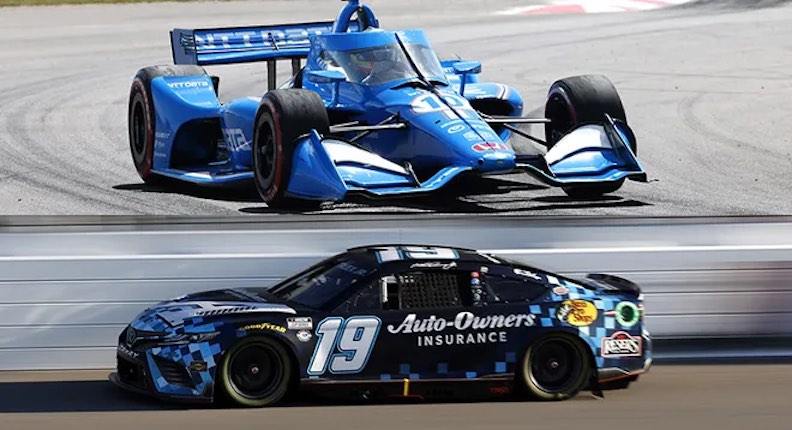IndyCar and NASCAR are two of the most popular motorsport series in the United States, but they differ in many aspects, from the cars they use to the types of tracks they race on. Understanding the distinctions between these two racing disciplines can help fans appreciate the unique challenges and dynamics of each series.
IndyCar and Nascar: Car Design and Technology
One of the primary differences between IndyCar and NASCAR lies in the design and technology of their respective race cars. IndyCars, also known as open-wheel cars, are sleek, lightweight, and specifically built for road and street courses, as well as oval tracks. They feature an open cockpit design, exposed wheels, and advanced aerodynamics to maximize speed and maneuverability. Turbocharged V6 engines power these cars, generating approximately 700 horsepower and propelling them to high speeds on straightaways, while also providing precise maneuverability in tight corners.
On the other hand, NASCAR cars are classified as stock cars and are designed to resemble production cars, albeit with modifications for racing. They have a closed cockpit, a higher roofline, and a heavier body. NASCAR vehicles are primarily built for oval tracks, though they also race on a few road courses. The cars are powered by naturally aspirated V8 engines, which produce around 750 horsepower. The emphasis in NASCAR racing is more on close-quarters, wheel-to-wheel racing and drafting techniques, as opposed to the high-speed maneuvers of IndyCars.
Track Types and Racing Style
Another significant difference between IndyCar and NASCAR is the variety of tracks they race on and the resulting racing style. IndyCar series includes a mix of road courses, street circuits, and oval tracks. Road and street courses require precise braking, cornering, and skillful overtaking maneuvers. The narrow and winding nature of these tracks places a premium on driver skill and strategy.
In contrast, NASCAR predominantly races on oval tracks, renowned for their banked turns and exhilarating high-speed racing. These tracks vary in length and banking angles, which influence the racing dynamics. NASCAR racing often involves drafting, where drivers tuck in closely behind one another to reduce aerodynamic drag and gain a speed advantage. This strategy can lead to thrilling pack racing and close battles for position.
Team Structure and Driver Background
The team structure and driver backgrounds also differ between IndyCar and NASCAR. In IndyCar, teams are generally smaller and consist of a few cars. Drivers often come from various racing backgrounds, including open-wheel racing series such as Formula 1, Formula E, or lower-level open-wheel series. This diversity adds to the international flavor of the IndyCar series.
In contrast, NASCAR teams are typically larger and have multiple cars. Many NASCAR drivers have a background in stock car racing and have risen through the ranks of NASCAR’s regional and developmental series. In the world of NASCAR, success heavily relies on the close-knit relationships between drivers, crew chiefs, and pit crews. The essence of teamwork is evident as they work seamlessly together, forming an integral part of victory. Their collaboration is crucial for achieving success.
Conclusion: IndyCar and Nascar
IndyCar and NASCAR may both be forms of motorsport, but they offer distinct experiences for drivers and fans alike. Each series has its unique characteristics and challenges. From the car design and track types to the racing style and driver backgrounds. IndyCar and NASCAR cater to different preferences, with the former offering high-speed thrills and the latter focusing on wheel-to-wheel action. Both disciplines, however, captivate audiences by showcasing the exceptional skill and passion of the drivers and teams, turning each series into an exciting spectacle in its own unique way.
Examine the difference between F1 and IndyCar.
